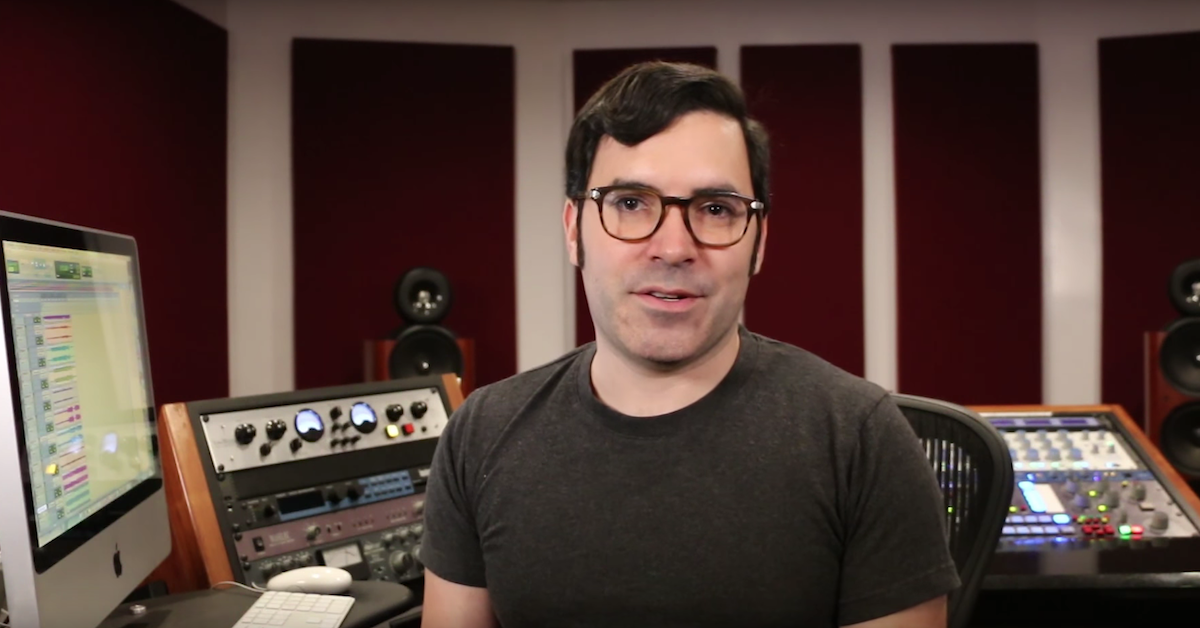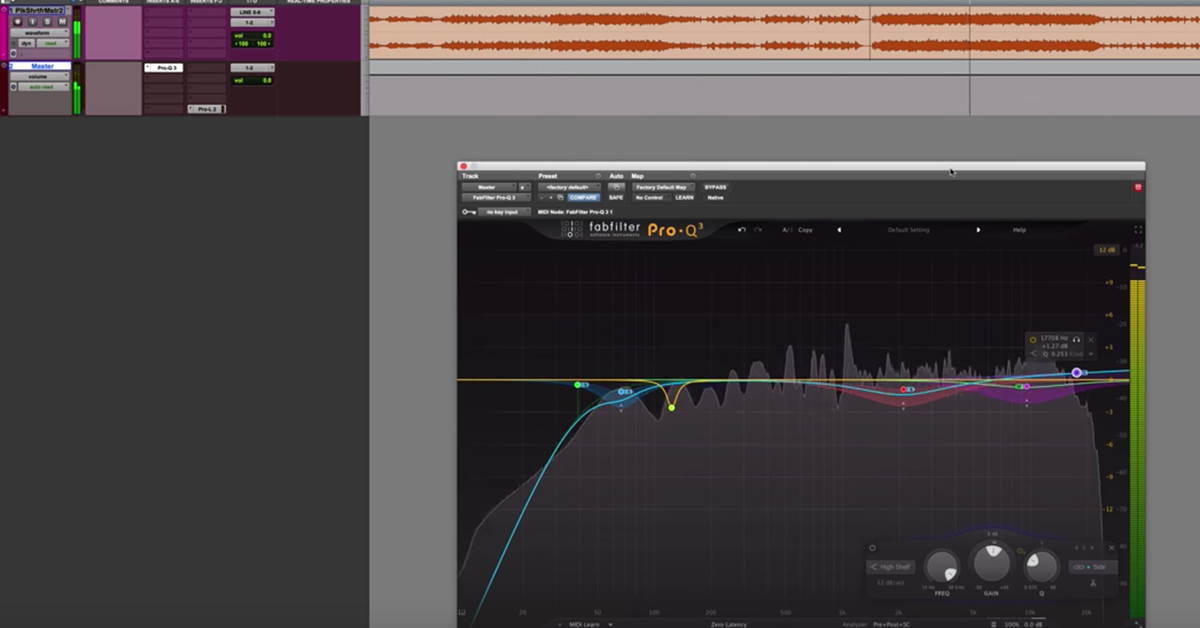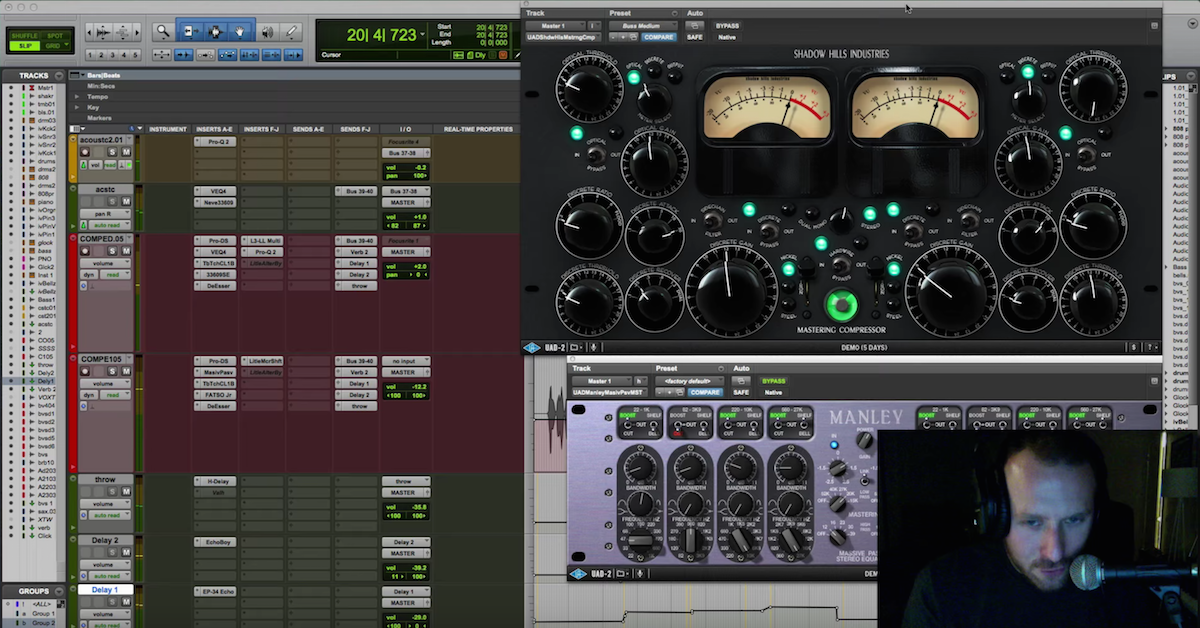7 Awesome EQ Plugins for Mastering
Article Content
Equalization can breathe life into a master, or even potentially save it from poor decisions made during mixing. Here are some of my favorite equalizer plugins for mastering …
1. UAD Manley Massive Passive
The hardware version of the Manley Labs Massive Passive is an absolute staple in mastering studios. Having used them before (I’ve also been lucky enough to have visited the Manley Labs Factory), I can honestly say that the Massive Passive is a work of art, in both functionality and sound.
UAD has done a wonderful job emulating the hardware with this plugin. The high end is silky, the low end is defined, and the quality of everything in between solidifies the Massive Passive as an extremely musical equalizer, great for almost any task an engineer might need it for.
Unique feature: I’d say the unique feature for the Massive Passive is that it has virtually everything a mastering engineer could want in an equalizer. High and low pass, a choice between shelf or bell on each band, Stereo Unlink — it’s truly versatile in addition to sounding flawless. Inexperienced engineers may be intimidated by the sheer number of controls found on the Massive Passive, but it’s extremely easy to use once you get used to it.
2. Brainworx bx_digital V3
Whereas I use something like the Massive Passive for adding color or sheen to my material, the bx_digital V3 is my go-to subtractive EQ, and is in many cases, found at the beginning of my mastering chain.
I use it to sweep through and find/remove unwanted frequencies before any other processing is applied, avoiding those problematic frequencies triggering, say, a compressor or saturator. It also works in mid-side mode, which is helpful for treating material like vocals, kick or bass independently of any material that might be panned to the sides. It has many other functions, and if you’re in the market for a surgical, transparent EQ plugin, I highly recommend this one.
Unique feature: It solos the band as you click on the frequency knob, allowing you to sweep through and find problematic frequencies quickly and accurately.
3. Pultec EQP-1A Emulations
There are a lot of emulations of this classic equalizer, and several of them are really great.
I have my preferences, but my suggestion is to go and demo as many as you can to find the one that works best for you and fits your budget (links below). Though this is traditionally more of a mix buss EQ, if a master needs clarity or low end weight, the Pultec does a fantastic job, and very quickly …
- Universal Audio
- Waves
- IK Multimedia
- Softube (technically this is a Tube Tech emulation)
Unique feature: Technically you can boost and attenuate at the same exact frequency, which seems counterintuitive, but because the boost and attenuation curves are different, the resulting curve has its own distinct Pultec flavor. Great for adding weight or sparkle to your material.
4. UAD Chandler Curve Bender
This emulates the classic EMI TG12345 desk from Abbey Road Studios, so anything within six degrees of separation from my beloved Beatles is a must-own.
The functionality is similar to the Massive Passive: four bands allowing for shelving or bell, high and low-pass filters, and the ability to unlink channels. However, I do find the Curve Bender feels more vintage, vibey and colorful. If I need something to feel more expressive, or pronounced in the upper-mids or highs, I’ll definitely choose the Curve Bender.
Unique feature: It works in mid-side mode. All of the color and tone of the TG12345 available to process content in the center independently from the sides.
5. iZotpe Ozone (EQ, Dynamic EQ & Vintage EQ)
This is an absolutely feature-packed series of equalizers.
The EQ is surgical and transparent, the Vintage EQ is for color, and the Dynamic EQ allows for a more musical approach to processing different frequency ranges than a traditional EQ. I may reach for one of the aforementioned equalizers for color, but if I need a quick, all-in-one solution, iZotope’s Ozone 7 can’t be beat.
Unique feature: Matching EQ. This allows you to identify and capture the frequency spectrum of a chosen mix or master, and then apply it to your own material. At the very least, for analyzing what the professionals are doing, it’s a fascinating and educational tool.
6. Fabfilter Pro-Q 3
Fabfilter’s flagship equalizer has gotten more robust with each and every update. The Pro-Q 3 is a swiss-army knife equalizer, capable of handling basically any application you throw at it, quickly and effectively. Updates to Pro Q 3 include the ability to make any of the bands dynamic, meaning that they will not any effect on the signal unless it passes a set threshold. This EQ is chock full of features that make it an ideal choice if you’re in need of a mostly transparent, surgical tool for mastering including:
- Mid/Side capability
- Linear and natural phase modes
- Spectrum grab: This allows you to select and then boost/attenuate frequencies via the spectral analyzer.
Mastering Tip: Use the dynamic EQ mode as a mastering de-esser.
Considering that mastering can often include boosting in the upper mids and highs, de-essing is common during mastering. I often employ the Dynamic EQ mode for this application. Aside from your ears telling you if there are issues in the 6-10khz range, the Pro-Q 3 provides excellent visual feedback via its gorgeous metering and will tell you if there’s an excess in this (or any) frequency range. I’ll create a band at the problem frequency, engage dynamic EQ mode, and attenuate to taste. What makes this EQ even more powerful is the ability to choose mid/side mode per band. So if the offending vocal-only occurs up the middle, I’ll make sure to set the band(s) appropriately.
7. UAD Millennia NSEQ-2
Faithfully emulating the esteemed hardware unit, Universal Audio’s Millennia NSEQ-2 brings the clarity, transparency, and versatility of the original unit to your digital audio workstation, and at a fraction of the price. The hardware was lauded for its twin topology design, allowing users to utilize both solid-state and tube signal paths. The differences between the vacuum-tube and J-FET solid-state signal paths are subtle, and regardless of what one chooses, the sound is open, musical and clean.
The stereo NSEQ-2 features four bands which give you control from 20Hz to 21kHz, with the lowest and highest bands allowing to choose a shelving EQ, and the middle two bands allowing for control over the Q/bandwidth. The user can opt to link the stereo channels, or un-link if there are discrepancies between the left and right that require unique equalization of each. The plugin also features a trim control, so you can level match and ensure that the changes you’ve made actually improve your material, rather than simply make it louder.
Mastering Tip: Use the Mid/Side Mode
Mid/Side processing can be such a flexible tool when mastering. If I want to create a further sonic distinction between the elements that are hard-panned, and the ones that sit straight up the middle, I often reach for some sort of Mid/Side processor. For example, if I want to add some bite to electric guitars which are hard-panned, but I don’t want to boost harshness in the lead vocal (which sits in the center), I’ll use a Mid-Side EQ to perform that boost on the sides only, perhaps at 1-2kHz, or wherever the guitars need some definition.
If I want to clean up some brittle cymbals in the sides, without sacrificing clarity and detail in the centered vocals and snare, I can quickly and effectively accomplish this with the NSEQ-2. Mid/Side or not, the parametric Millennia NSEQ-2 is one of my go-to ‘clean’ equalizers, allowing me to transparently enhance my program material.
Honorable Mention
If Universal Audio seems over-represented on this list, I suggest demoing their many great EQ plugins. They really have figured out how to capture and emulate the clean, smooth high end of analog equalizers. The BAX EQ is another emulation of a piece of classic mastering gear, and does a wonderful job cleaning up problematic low frequencies, taming high end, or adding a transparent sheen to your masters.





